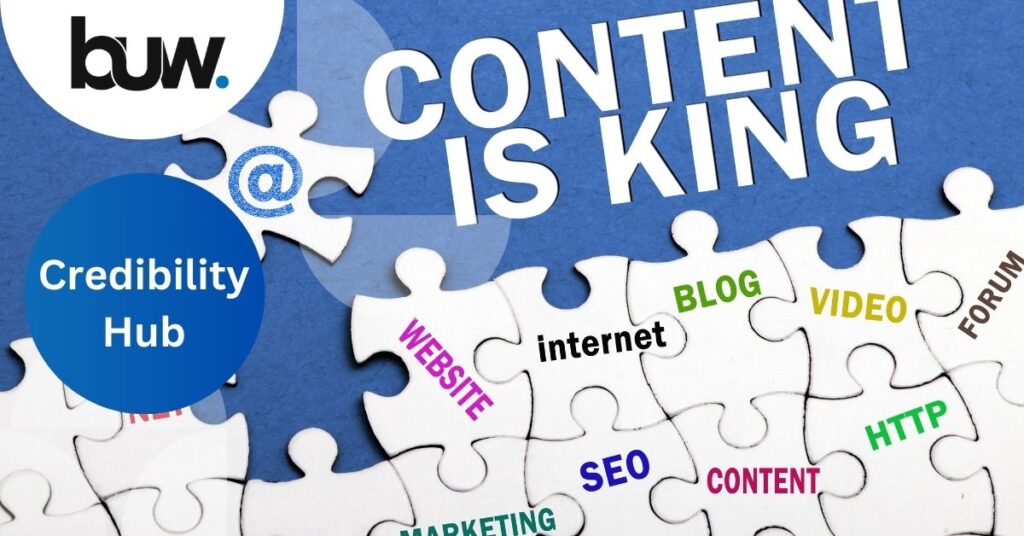7 Content Strategies for 2024
Ever wondered how to keep your content game strong in 2024? With the ever-changing landscape of digital marketing, it’s important to stay updated on the latest strategies. In today’s fast-paced world, even smart business executives struggle to stay up with the latest trends. With so much going on, it can be difficult to find time to learn about the latest marketing trends. However, being informed and adaptive is necessary for maintaining a competitive advantage in the dynamic world of content marketing. Did you know that, according to the Content Marketing Institute, 73% of B2B marketers and 70% of B2C marketers use content marketing in their overall marketing strategies? These statistics highlight how content marketing has become an essential component of modern marketing strategies, demonstrating its wide application and success in reaching both business and customer audiences. This blog aims to provide you with the information you need to effectively leverage the potential of content marketing in 2024. 7 Content Strategies for 2024 Incorporate these seven content strategies into your content marketing efforts and see how they increase brand visibility and drive business success. 1. Interactive Content Incorporate interactive features such as quizzes, polls, and interactive tools to increase engagement and foster deeper connections with your target audience. By encouraging user interaction, you can differentiate your brand from the digital noise, providing interactive experiences that make a lasting impact and encourage consumer loyalty. Even in your social media posts, consider adding questions that encourage your audience to contribute their ideas in the comments section, which will increase engagement and establish connections around your business. 2. Video Content Utilising video as an effective of storytelling can significantly enhance your capacity to engage and connect with your audience. Videos have a special ability to attract attention while conveying complex ideas. To increase the reach and impact of your video content, use platforms such as TikTok and Instagram Reels for short-form video content. These platforms provide a highly engaging atmosphere in which you can express your creativity and individuality while fostering meaningful relationships with your audience. 3. Long-Form Content Investing in detailed, long-form material, like blogs, is a strategic way to develop thought leadership and authority in your field. Addressing complex topics in depth provides your audience with unique insights and solutions, establishing your brand as an expert in the field. Furthermore, long-form content is a powerful strategy for increasing organic traffic and building brand credibility. Search engines prefer high-quality, authoritative content, which is more likely to appear higher in search results and provide organic traffic to your website. 4. SEO Optimised Content In 2024, the need to prioritise SEO optimisation for content visibility and search engine rankings will be more evident than ever. By implementing SEO best practices into your content strategy, you can improve your chances of being discovered by your target audience online. Through carrying out comprehensive keyword research, you can uncover relevant terms and phrases that are associated with the keyword searches of your target audience. This will help you create content that is more successfully tailored to their demands. 5. Podcasting and Audio Content As the popularity of podcasts and audio content consumption grows, utilising this medium provides a significant opportunity to engage with your audience while on the go. Creating podcasts or audio series about your industry or niche allows you to reach and communicate with your target audience in a simple and accessible way. By providing informative talks, interviews, or educational content, you can position your business as a reliable source of information and experience in your field while also catering to the demands of an increasingly mobile demographic. 6. User-Generated Content (UGC) Leveraging the power of user-generated content (UGC) is a proven strategy for building authenticity and trust with your audience. By encouraging people to share their experiences, reviews, and testimonials on social media platforms, you gain access to the authentic voices of delighted customers, giving your business legitimacy. Integrating user-generated content (UGC) into your marketing campaigns not only humanises your business but also promotes engagement with the community by displaying actual people interacting with and acknowledging your products or services. 7. AI-Driven Personalisation Using AI technology can transform your content marketing approach by tailoring content to individual user interests and behaviours. Using AI algorithms, you can analyse massive volumes of data to acquire insights into what connects with your target demographic. This tailored strategy not only increases user engagement but also improves conversion rates by ensuring that the content presented is relevant and valuable to the target demographic. By sending appropriate content to the right people at the right time, you can greatly boost the effectiveness of your marketing efforts and encourage meaningful engagement with your business. Frequently Asked Questions (FAQs) Let’s go over some frequently asked questions from executives about content strategies for 2024. 1: What are some effective ways to repurpose content in 2024? Repurposing content allows it to last longer and reach new audiences. Consider converting blog entries into podcasts, videos into blog articles, or making infographics from research papers. Customise the format to fit various platforms and audience preferences. 2: How do I ensure that my SEO-optimised content remains relevant in 2024? Stay up-to-date on the newest SEO trends and algorithm updates so that you can modify your content strategy properly. Continuously evaluate keyword performance and user behaviour to make data-driven changes to your content. 3: How can I measure the effectiveness of interactive content? Keep track of engagement rates, time spent on a page, and conversion rates for your interactive content. Analyse user interactions and feedback to help improve and optimise future content strategies. Conclusion We hope that this blog has given you useful insights into dealing with the complicated world of content marketing in 2024. By embracing innovative strategies and remaining adaptable, you can effectively engage your audience and achieve meaningful outcomes for your business. Remember that investing in content marketing is more than just keeping relevant; it’s about making real connections with your target audience. So, ask
7 Content Strategies for 2024 Read More »







